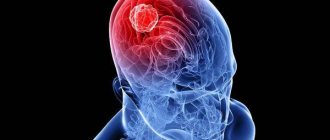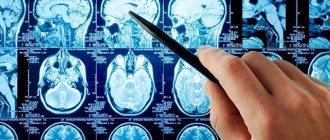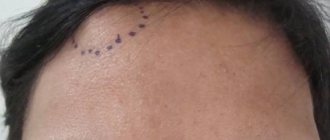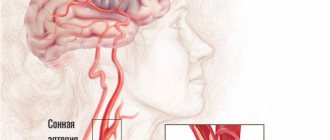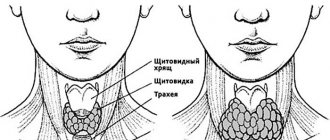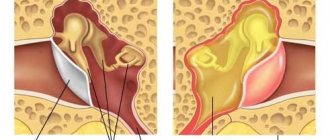Speech is one of the conscious higher mental functions inherent exclusively to humans. Its formation is associated with a long cultural and historical heritage. The formation of the foundations of speech goes through a number of successive stages, followed by transformation into a whole system of means of communication, as well as other mental processes associated with it, including thinking. The loss of the ability to speak, express thoughts in words, and understand spoken speech sounds significantly reduces the patient’s quality of life and his socialization. This disorder of already formed speech is called aphasia.
Aphasia is a systemic speech disorder that occurs with organic lesions of the brain and covers various levels of the speech system. Such defects transform other mental processes and lead to the disintegration of all mental activity of a person.
What is aphasia?
Aphasia is a secondary disease that occurs as a result of damage to the areas of the brain responsible for speech. The disease manifests itself as the inability to speak, read, write and understand other people’s conversations. In most cases, the disease occurs suddenly, but with a tumor disease it develops gradually along with the growth of the tumor. All people are susceptible to aphasia, but the disease is more common in older people. The form and type of development of the disease depends on the location and size of the damaged area of the brain, the age of the patient and the type of disease. The disease is often accompanied by other disorders, such as articulation disorders or apraxia of speech.
Sensory aphasia
This form of the disease manifests itself in the fact that a person completely ceases to understand and perceive speech.
With this type of speech disorder, a person ceases to understand the speech of himself and those around him, that is, there is a violation of auditory gnosis. A person hears speech, but lacks phonemic awareness. With sensory aphasia, speech is perceived as “gibberish” or just noise. Since speech control disappears, expressive speech becomes frustrated again.
The patient “jabbers”, unable to stop (logorrhea), it is impossible to understand him, his speech is replete with verbal and literal paraphasias. Perseveration is observed - constant repetition of the same sounds, words or syllables.
Usually patients have no awareness of their defect. They also can’t really write or read, they don’t distinguish between the letters where “s” and “z” are, and they don’t understand the differences in the spelling of the words “juice” and “side”.
Reasons for the development of the disease
With the development of aphasia, a person loses the ability to express his thoughts verbally and understand other people's speech (both oral and written). The disease is very dangerous because it disrupts the usual rhythm of a person’s life and does not provide the opportunity to lead a full life. The main causes of aphasia include:
- A stroke is a disruption of blood circulation in the brain, which impairs its functioning, particularly in the area responsible for speech. Cells die and cannot conduct impulses and perform their usual “work.”
- Head injuries, concussion.
- Infectious or viral damage to the brain (meningitis, encephalitis).
- Development of tumor formation in the brain.
- Mental disorder – dementia.
- Chemical brain damage.
- Disorders of the central nervous system, including Alzheimer's disease.
Post-stroke aphasia: clinical picture, differential diagnosis, treatment
Speech disturbances are a common symptom of stroke (15–38%). They often lead to permanent disability, significantly complicate rehabilitation during the recovery period, reduce the quality of life of both the patients themselves and those around them, cause negative psycho-emotional reactions, and increase the economic costs of treatment. Compared to patients with stroke but without speech disorders, patients with post-stroke aphasia have a higher mortality rate and stay in hospital longer. Predictors of good recovery of speech function are mild to moderate severity of speech disorders in the acute period of stroke, the amount of brain damage (the smaller the ischemic focus, the higher the chances of recovery), young age, high Barthel index, and high level of education. In addition to the treatment of the underlying vascular disease, patients with speech disorders need systematic speech therapy sessions and medications in order to optimize cerebral neuroreparative processes.
Table. Types of aphasia
Aphasia is a disorder of a person’s higher mental functions, which consists of a loss or decrease in the ability to verbally communicate, including constructing one’s own speech utterance and/or understanding spoken speech. As a rule, patients with aphasia have pathology in both oral and written speech (reading, writing), and also have difficulties in using sign language and Braille (a dotted font for writing and reading for the blind).
Neuroanatomy of aphasia
Speech areas are a complex neurocognitive network located in the dominant hemisphere. In approximately 95% of people, the left hemisphere is dominant in speech, and in 5% of cases, either both hemispheres are involved in the innervation of speech, or the right hemisphere becomes dominant. Already at birth, in more than half of newborns, the cortex in Wernicke’s area and the angular gyrus in the left hemisphere is approximately 50% larger in volume than in the right [1]. If for some reason in very early childhood the left speech areas suffer, then the right hemisphere of the brain acquires signs of dominance [1].
Speech centers include the posterior parts of the left frontal lobe (Broca's area) and the left superior temporal gyrus (Wernicke's area), as well as connections between these areas. The motor program for speech utterance is formed in Broca's area. Broca's area projects directly to the neurons of the precentral gyrus, which innervate the muscles of the larynx and oral cavity. Wernicke's area is responsible for comparing auditory information with visual and kinesthetic images, which is necessary for understanding spoken speech. Comparison of information is provided by connections between Wernicke's area and the occipital and parietal cortex. Another cerebral region important for speech is the angular gyrus in the inferior parietal lobule, which is responsible for the perception of written speech and sign language.
In addition to the classical speech centers, other areas of the brain also play an important role in the formation of speech. These include the insula (important for articulation), zones of the frontal and temporal lobe (processing sentences), as well as zones of the occipital and parietal cortex of the brain (responsible for memory for the meanings of words) [2–5].
The subcortical nuclei of the brain also make a significant contribution to maintaining normal speech function. Diffusion-weighted and perfusion-weighted magnetic resonance imaging (MRI) of the brain in patients with ischemic damage to the basal ganglia and aphasia showed a secondary decrease in perfusion in the subcortical gray ganglia. However, the prognosis for subcortical aphasia is more favorable than for cortical damage [6]. In recent years, the role of cerebellar damage has also been actively discussed, since it can also lead to dysphasic disorders in the form of disturbances in the grammatical structure of speech [7].
Etiology of aphasia
The most common cause of aphasia is ischemic stroke. Less commonly, speech disorders are observed with hemorrhagic strokes, space-occupying brain lesions, infectious lesions (abscess, encephalitis), and traumatic brain injury. Rare cases of the development of aphasia in demyelinating diseases have been described [8, 9].
Transient aphasia can be observed with transient ischemic attacks, epilepsy, migraine. The presence of aphasia during a transient ischemic attack is one of the high risk factors for developing stroke in the coming days and weeks [10].
Gradually progressive aphasia may also be a manifestation of a neurodegenerative disease. Most often, gradually progressive aphasia is associated with frontotemporal degeneration, less often with Alzheimer's disease or other dementing diseases. Moreover, in some cases, the clinical picture does not show any other cognitive and/or behavioral disorders for many years (the so-called primary progressive aphasia) [11–13].
Speech status study
To diagnose and analyze the characteristics of dysphasia, it is necessary to carefully listen to the patient’s speech, examine the understanding of spoken speech, reading and writing. You should pay attention to the number of words spoken per minute (speech fluency), unmotivated repetitions of individual words and phrases (perseverations), shortened phrases (less than five words), errors in the grammatical construction of statements (case endings, prepositions, conjunctions, word order in a sentence etc.) and/or difficulties in understanding grammatical structures. In addition, it is necessary to assess the ability to control the movements of articulatory muscles (speech praxis). To do this, you can ask the patient to repeat the phrase “artillery brigade” several times.
An important part of speech research is the assessment of its nominative function.
. The patient is shown certain objects and asked to name them, starting with familiar ones (for example, a spoon, pen, mug) and moving on to unusual ones (for example, a phonendoscope). Insufficiency of the nominative function of speech is noted in many aphasias, sometimes becoming one of the main manifestations of dysphasia.
Assessing oral language comprehension
is carried out by checking the execution of verbal commands, first simple and then complex (“close your eyes”, “show me two fingers”, “touch your left ear with your right hand”). We can then move on to explore understanding of more complex grammatical structures (“Are my brother’s father and my father’s brother the same person?” or “Is my aunt’s uncle a man or a woman?”). Final trials may reveal a lack of understanding, including in those who have followed simple verbal commands.
When checking the reading function
the patient is asked to read aloud a paragraph from a newspaper or magazine, assessing the correct pronunciation of the words. Comprehension of written language can be tested using written commands (eg, “take this piece of paper, fold it in half and place it on the floor” or “close your eyes”).
Letter evaluation
– the patient is asked to write any sentence. You can also dictate any text to the patient or offer to write the names of objects drawn in the pictures.
The above methods make it possible to diagnose dysphasia without leaving the patient’s bedside, which is of great importance in the acute period of stroke. When diagnosing speech disorders in a patient, it is necessary to examine them in more detail, analyze quantitative and qualitative features, and also evaluate other higher brain functions: attention, memory, praxis, visual-spatial orientation, etc.
Epidemiology and types of aphasia
According to the literature, aphasia is a common symptom of stroke (15–38%). Typically, the clinical picture also includes other symptoms of damage to the dominant hemisphere (right-sided hemiparesis, hemihypesthesia, hemianopsia) [14]. Let's look at the main types of aphasia (table).
Broca's aphasia (motor aphasia)
characterized by a violation of the construction of one’s own speech utterance, as well as the repetition of phrases. The patient's speech is laconic, poorly articulated, and characterized by auditory and verbal perseverations. The letter is broken. Comprehension of addressed speech may be incomplete in the first few days after acute cerebrovascular accident, but then quickly recovers. Motor aphasia develops as a result of acute ischemic stroke in the anterior branches of the left middle cerebral artery and is often combined with hemiparesis and hemihypesthesia.
Wernicke–Kozhevnikov aphasia (sensory aphasia)
characterized primarily by impaired understanding of oral and written speech. The patient’s own speech, as a rule, maintains normal tempo and intonation, but is meaningless, as it contains numerous replacements of syllables and words with similar ones in sound, but meaningless in meaning (literal and verbal paraphasias), as well as new unusual words (neologisms). With significant severity of these disorders, speech production takes on the character of so-called verbal okroshka. However, many patients are not aware of their defect. Sensory aphasia develops when the upper parts of the temporal lobe and the lower parts of the parietal lobe are damaged as a result of a stroke in the territory of the left middle cerebral artery. It is often combined with right upper quadrant hemianopia.
Total sensorimotor aphasia
– a set of symptoms of motor and sensory aphasia. Develops as a result of extensive strokes in the left middle cerebral artery, usually combined with hemiparesis, hemihypesthesia and hemianopsia. Rarely, encephalitis and late manifestations of neurodegenerative processes can be the cause of total aphasia.
Dynamic aphasia (transcortical motor aphasia)
is largely reminiscent of Broca's motor aphasia. There is a violation of the initiation of speech activity, perseveration and grammatical errors occur, while the understanding of addressed speech does not suffer. The main difference between dynamic aphasia and motor aphasia is preserved repeated speech: the patient can repeat words and phrases after the doctor. Typically, dynamic aphasia develops with a heart attack in the territory of the left anterior cerebral artery.
Transcortical sensory aphasia
is characterized by a violation of the understanding of addressed speech, which resembles Wernicke–Kozhevnikov aphasia, but the severity of these disorders is somewhat lesser. The patients’ own speech is fluent, but lacks content, and verbal paraphasia may be observed. However, unlike Wernicke's aphasia, repeated speech is preserved in transcortical sensory aphasia. Patients may also read aloud, but without understanding the meaning of what they read. Transcortical sensory aphasia develops with damage to the temporo-occipital or temporo-parietal areas adjacent to Wernicke's area as a result of a stroke, and can be combined with hemianopsia.
Transcortical mixed aphasia
– patients have signs of transcortical motor and sensory aphasia, but the ability to repeat words and phrases after the doctor remains intact. Understanding of written and spoken language also deteriorates significantly. Occurs when there is damage in the anterior and posterior cerebral arteries during repeated cerebral embolisms, infarctions in areas of adjacent blood supply associated with systemic circulatory disorders, such as acute heart failure.
Amnestic aphasia
– patients with amnestic aphasia cannot name a word or object, but they can describe the meaning and functions of the object. Spontaneous speech is characterized by pauses, word substitutions, and paraphasias are possible. Repetition of words and understanding of oral speech are not impaired. Amnestic aphasia has been described with damage to various anatomical areas, including the basal temporal lobe, anterior temporal lobe, temporo-parieto-occipital junction, and inferior parietal lobe.
Alexia without agraphia
– patients can write, but not read. Understanding of oral speech is intact, spontaneous speech is not affected. It develops when the left occipital lobe and splenium of the corpus callosum are damaged during an ischemic stroke in the territory of the left posterior cerebral artery [15].
Differential diagnosis
In most cases, in patients with risk factors for stroke (in old age, in the presence of arterial hypertension, diabetes mellitus, hypercholesterolemia, concomitant cardiac pathology, atrial fibrillation, etc.) with the acute development of neurovascular syndrome, characteristic of damage to the middle and/or posterior cerebral artery dominant hemisphere, the diagnosis of ischemic stroke is not in doubt. Neuroimaging methods are used to verify the diagnosis.
Impaired understanding of speech and speaking, reminiscent of dysphasia, can develop with acute dysmetabolic encephalopathy (delirium)
. In this case, difficulties often arise in understanding the spoken speech; the patient does not follow commands. Grammatical errors and paraphasia appear in the patient’s own speech. Signs of a confused state of consciousness, the presence of hallucinations, tremors, psychomotor agitation and delirium help in diagnosis.
Akinetic mutism
develops when the medial frontal region is damaged. In such patients, there is an absence or extreme paucity of spontaneous speech, poor execution of commands, a decrease in motor reactions, and signs of catatonia (waxy flexibility).
Patients suffering from depression
, may avoid communicating with others. They do not look the doctor in the eyes, they lie with their faces turned away from the people around them. In this case, anamnesis collected from the patient’s relatives and/or loved ones plays an important role in the differential diagnosis.
If the patient has episodes of transient aphasia
The differential diagnosis is made between
transient ischemic attack and epilepsy
. 24-hour electroencephalographic monitoring, angiography of cerebral vessels, and duplex scanning of the brachiocephalic arteries are performed.
Aphasias with gradual onset and slow progression, especially in middle-aged and elderly people, require a differential diagnosis between neurodegenerative diseases and brain space-occupying lesions
. In this case, an MRI of the brain is indicated.
Treatment and prognosis of post-stroke aphasia
Speech disorders significantly disable patients, reduce the quality of life of both themselves and those around them, interfere with full neurorehabilitation, and increase the economic costs of treatment. In addition, patients with post-stroke aphasia, compared with patients with stroke but without speech disorders, have higher mortality rates and stay in hospital longer [16].
The degree of speech restoration depends primarily on the location and extent of damage to the brain. For example, sensorimotor aphasia as a result of ischemic stroke of the cardioembolic type, usually in combination with right-sided hemiparesis and hemihypesthesia, has a less favorable prognosis than motor aphasia as a result of a stroke in the anterior cortical branches of the middle cerebral artery [17].
Predictors of good recovery of speech function are young age, high Barthel index, high level of education and hemorrhagic nature of the stroke [17].
Management of a patient with aphasia involves, in addition to treating the underlying vascular disease, systematic speech therapy exercises [17–19]. They are carried out by patients independently under the supervision of relatives. The clinical effectiveness of speech rehabilitation has been assessed in a number of studies [20, 21]. It has been shown that the specific method of speech therapy correction is not of fundamental importance, while the frequency and intensity of classes significantly influence the prognosis [22, 23]. Speech therapy exercises must be started already in the acute phase of a stroke and continued throughout the entire recovery period, as long as the patient continues to have speech disorders. Currently, computer programs and applications for phones and tablets have been developed that allow the patient to communicate with others and independently perform speech exercises.
Restoration of speech in the first months after a stroke is associated with reperfusion of the corresponding cortical centers, activation of adjacent cortical areas and homologous brain areas in the contralateral hemisphere. This is evidenced by studies using diffusion-weighted and perfusion MRI methods [24, 25].
Drug therapy in patients with aphasia should be aimed at metabolic support of neuroreparative processes and improvement of cerebral blood flow.
To date, several randomized, double-blind studies of medications for post-stroke aphasia have been conducted. The effectiveness of bromocriptine [26] and amphetamine [27] has not been proven, and a meta-analysis of clinical studies of piracetam indicated a rather modest effect of this drug [28]. There is little clinical experience with the use of anticholinesterase inhibitors such as donepezil and galantamine, but their clinical effectiveness requires further study [29, 30].
Currently, the use of citicoline in patients with post-stroke aphasia seems promising. Citicoline (Ceraxon) is an endogenous mononucleotide containing ribose, cytosine, pyrophosphate and choline in its chemical structure. Being a necessary intermediate substance in the synthesis of structural phospholipids of the cytoplasmic and mitochondrial membranes of neurons, citicoline restores their integrity during ischemic damage. A number of experimental studies have shown that citicoline inhibits the enzyme phospholipase A2, normalizes energy processes in mitochondria, restoring the functioning of membrane sodium-potassium and mitochondrial adenosine triphosphatases. In addition, it enhances the activity of antioxidant systems, thereby providing a neuroprotective effect and preventing the processes of oxidative stress and apoptosis. Another mechanism of action of Ceraxon is to replenish cerebral acetylcholinergic deficiency, which is of great importance for metabolic support of cognitive activity in general. Finally, this drug affects dopamine and glutamatergic neurotransmission. Citicoline has a pleiotropic effect, also due to its influence on neurorepair processes, which play a key role in restoring lost functions [31]. A number of experiments demonstrated the effect of the drug on the processes of neuroglial activation, enhancement of post-ischemic neurogenesis, angiogenesis and neuroplasticity [32, 33]. It has been established that citicoline reduces the volume of brain damage during experimental ischemia and hypoxia, increases learning ability and has a beneficial effect on memory in experimental animals with age-related changes in the brain.
In clinical studies, Ceraxon improved functional recovery and accelerated rehabilitation of patients with ischemic stroke [34]. Currently, the effectiveness of citicoline in post-stroke cognitive and motor disorders has been shown [35, 36]. Moreover, the drug is characterized by a satisfactory safety and tolerability profile. The positive effect of the drug on speech disorders in patients after stroke has not been separately assessed. However, it can be assumed that the neuroregenerative properties of Ceraxon and its effects in the cognitive sphere will contribute to the improvement of speech functions due to the close relationship of these disorders.
Conclusion
When treating patients with aphasia, regular speech therapy sessions and long-term drug therapy are required, aimed at metabolic support of neuroreparative processes and improvement of cerebral blood flow.
Symptoms of aphasia and its forms
In medicine, there are several forms of aphasia, which differ in the nature of origin and symptoms. Let's look at the main types of disease and their inherent symptoms.
Sensory aphasia , another name is Wernicke's aphasia. This form of the disease is characterized by damage to the left temporal lobe of the brain. People with Wernicke's aphasia are able to produce long sentences that make no sense. They add unnecessary words, which they sometimes come up with themselves. It is almost impossible to understand the speech of such a person; similarly, the patient has difficulties in perceiving other people’s words. In all other respects, the patient behaves quite adequately, he is able to perform his usual work normally. Motor aphasia (Broca's aphasia) . This is a form of the disease, the development of which is provoked by damage to the frontal part of the brain. Patients with this diagnosis are able to speak simple, very short sentences. People have particular difficulty pronouncing prepositions, so they often simply skip them. Patients perceive other people's speech very well. The frontal lobe of the brain is responsible not only for speech, but also partially for motor skills, so Broca's aphasia is often accompanied by weakness or paralysis of the limbs on the right side of the body.
Global (total) aphasia. With this form, a significant part of the speech centers located in the brain is affected. This disease is always accompanied by a complete lack of understandable speech and the inability to understand other people’s words. Amnestic . With this form of the disease, the patient’s ability to name objects is impaired, although he perfectly remembers their purpose and main characteristics. Otherwise, the person’s speech is quite normal, understandable and healthy. Amnestic aphasia occurs when the parietal or occipital part of the brain is damaged.
Total aphasia
Total aphasia occurs in people who have had a heart attack and manifests itself in the loss of speaking skills
This disorder also occurs after a stroke, when there is extensive damage to the left hemisphere of the brain and an absolute loss of receptive, expressive and speaking skills. The patient is unable to intentionally produce sounds and any contact with him, gestures or speech, becomes impossible. These signs persist during the residual phase of the stroke; no dynamics are observed in the development of speech.
The patient may reproduce inarticulate sounds, or repeat the same word that remains in memory. Aphasia after stroke is characterized by the loss of automatic, nominative and reflected speech. Although such patients do not perceive the words spoken by other people at all, sometimes they can understand the meaning of questions that are significant to them personally, and even fulfill a couple of simple requests.
Total aphasia combines several types of speech defects.
Diagnosis of the disease
A neurologist diagnoses and treats aphasia. To make an accurate diagnosis and determine the form of the disease, the doctor conducts a series of tests, the implementation of which requires the patient to perform certain actions. For example, the patient must answer questions, repeat certain words or name objects, and also maintain a conversation. A CT scan or MRI of the brain is required for diagnosis, which will determine the location of the affected area and its size. Classic laboratory tests will help establish the patient's general health and help in choosing further treatment. Additionally, consultation with a speech therapist is required.
Diagnosis of aphasia
A neurologist diagnoses this disease. But there is a specialist in speech disorders - a doctor - aphasiologist. The presence of the disease is usually determined using special tests. Diagnostics includes:
- interviewing the patient (when speech disorders occurred, what events occurred before);
- examination of the patient, identifying neurological symptoms of the disease, such as altered height of reflexes, facial asymmetry, drooping corner of the mouth, etc.;
- diagnosis of the disease by a speech therapist in order to determine the stage of the disorder and the work to be done;
- electroencephalography (a method that allows you to assess the activity of certain areas of the brain);
- computer and magnetic resonance imaging of the head is aimed at studying the brain, its structure, identifying hemorrhages, ulcers, tumors;
- magnetic resonance angiography (the method is aimed at studying the patency of blood vessels in the cerebral cortex and can detect vascular aneurysms).
Treatment of aphasia
In some cases, treatment for aphasia is not required because speech function recovers on its own. Most often this happens if the cause of the disease is a violation of blood flow in the brain (ministroke or transient ischemic attack). After blood circulation is restored, speech is completely restored within a few days. But such a favorable outcome is extremely rare. As a rule, restoration of speech function requires a long period of treatment and rehabilitation, but even in this case it is not always possible to achieve a complete cure.
In order to get the maximum effect, therapy should be started as early as possible. In addition, the effectiveness of treatment depends on the degree of brain damage, the affected area and its size, the age and general health of the patient. It is very important that the patient’s relatives and friends take an active role in the recovery process, so they need to follow some rules when communicating with a patient with aphasia:
- You need to speak in simple words and short sentences.
- It is worth maintaining a normal, familiar style of communication. Talk to the patient as an equal, and not as if he were a weak-minded person or a child.
- It is important to actively involve the patient in the conversation, to maintain a conversation with him when he makes contact.
- It is necessary to avoid frequent corrections and comments that relate to speech. As a result of such an attitude, a person may become withdrawn and stop talking altogether.
- There is no need to rush a person, you should give him time so that he can formulate his thought and be able to calmly express it.
In some cases, medications are actively used to eliminate the cause that provoked aphasia. These medications include: antidepressants, tonics (Caffeine, Ginseng Root), nootropic substances. In addition, a speech therapist works with the patient, who corrects speech using computer equipment and linguistic training. If the cause of the disease is a tumor, then surgery is performed to remove it. Aphasia is a speech disorder that occurs due to brain damage. It is possible to resume speech if you start timely treatment and strictly follow all the doctor’s recommendations.
Afferent motor aphasia
Afferent motor aphasia is a kinesthetic disorder of already formed speech. It occurs against the background of damage to the articulatory area of the postcentral gyrus.
Causes of afferent motor aphasia
The pathological process can be toxic, ischemic, inflammatory and post-traumatic in nature. The main reasons for the development of afferent motor aphasia:
- Stroke. This is one of the most common causes of speech dysfunction. During an ischemic stroke, there is death of neurons in the affected area. The main reason is a violation of normal blood circulation, which leads to spasm of the feeding cerebral artery. With a hemorrhagic type of stroke, bleeding and tissue compression are observed.
- Traumatic brain injuries. A brain injury leads to injury to neurons that are necessary for the normal perception of afferent information from articular organs. As a result, an intracerebral hematoma is formed, post-traumatic edema increases and neurons are compressed.
- Tumor process in the brain. Astrocytomas, gliomas and medulloblastomas in the parietal zone cause neuronal destruction. As the intracerebral tumor grows, speech disturbances will become more pronounced.
Afferent motor aphasia can occur against the background of Alzheimer's disease, Pick's disease and leukodystrophy. With these pathological processes, atrophic changes in the cortex are observed. This type of speech dysfunction may occur in advanced dementia.
Symptoms of afferent motor aphasia
A patient with afferent motor aphasia has problems with sound pronunciation. Partial or complete replacement is possible. In particularly advanced cases, the patient cannot utter a single articulate sound.
In mild pathology, sounds are replaced by close articulations. Problems with reading and writing often arise, since the patient cannot pronounce words through himself. With afferent motor aphasia, it becomes difficult for the patient to lick or pout his lips. Literal paraphasias are formed.
Treatment of afferent motor aphasia
Initially, the doctor must establish the cause of the pathological process. To eliminate infectious and inflammatory processes, antibacterial and antiviral drugs are used. In case of stroke, differentiated vascular treatment is indicated.
In case of traumatic or tumor processes, examination by a neurosurgeon is necessary. If necessary, neurosurgical therapy is performed. Elimination of aphasia begins in the early recovery period. It involves speech therapy sessions and medication.
Types of disinhibition exercises:
- repetition of verses;
- pronouncing phrases;
- conjugated and reflected pronunciation of automated series.
All classes are conducted with facial accompaniment from the teacher. He sits opposite the patient and demonstrates in an exaggerated manner the position of the lips, tongue and cheeks.
The goal of drug treatment is to normalize blood circulation and metabolic processes in the affected areas. Nootropic, vasoactive and neutoprotective medications are prescribed. If necessary, psychotherapy or conversations with a psychologist are carried out.
What is this
Aphasia is speech problems of varying degrees of complexity (up to complete absence of speaking) associated with incorrect brain activity.
Similar prerequisites have:
- Apraxia, in which the ability to fully control one’s movements is lost (often this is dressing and undressing)
- Agnosia, which prevents one from perceiving the world through sight, hearing, and touch.
- Ataxia is uncoordinated action.
In general, the etiology of aphasia is associated with impaired functioning of individual areas of the brain. Depending on this, scientists classify the disease.
Forms of aphasia in children and adults
There are several forms of this disease. Despite their differences, they have one thing in common - they are based on damage to the area of the medulla responsible for speech activity.
What is aphasia?
- Afferent motor – the patient cannot reproduce the movement of the organs of articulation according to the pattern. He reproduces them involuntarily, without any effort, because the functioning of the facial muscles is not affected.
- Efferent motor - the patient is not able to complete one articulatory pose and move on to another, for example, making the lips a tube immediately after smiling.
- Dynamic – the posterior frontal part of the left hemisphere is affected. The pronunciation of sounds is not impaired, but the patient cannot form a statement at the internal level; words and phrases are not consistent with each other.
- Sensory (acoustic-gnostic) – Wernicke’s area is affected. Patients do not distinguish sounds and do not understand what is said to them.
- Acoustic-mnestic. Patients do not remember the information they hear and cannot remember a large amount of it.
- Semantic. The patient is not able to understand complex speech structures and cannot create them himself.
Classification of the disease in children:
- Motor – Broca’s center (speech motor center) is affected. Children cannot say anything, although they hear and understand what others say. The triggering mechanism for spontaneous utterances and the ability to reproduce them are impaired.
- Sensory – Wernicke’s center is affected. The child is not able to understand what is said to him, although he hears perfectly.
Treatment with folk remedies
There are no folk remedies against this disease. The disease can only be cured by daily sessions with a speech therapist. The most effective treatment methods are dolphin therapy, hippotherapy (treatment with horses) and feline therapy (treatment with cats).
Let's talk in more detail about these methods:
- Hippotherapy (treatment with horses). During the presence of the patient next to the horse, his nervous system begins to calm down, which is considered the only advantage of classes with a speech therapist, which sometimes contributes to the person’s anxiety and inhibition of treatment. Communication with horses causes a lot of joyful emotions in a patient, helping to normalize brain function, which restores the immune system. When a patient comes to such classes, all problems leave him, he begins to speak well and understand the speech of others. And later he begins to understand everything and speak, even in another area. In addition to emotional communication, horseback riding develops motor skills in the patient, which restores brain cells. If you combine all this, then after several such sessions you can achieve excellent results, and a person will be able to return to their normal life.
- Dolphin therapy. Dolphins are used in medicine and psychotherapy. During communication with dolphins, a person’s psycho-emotional state stabilizes and psychological stress is relieved. Dolphin therapy is a great way to get rid of this disease and recover from various extreme conditions, such as hurricanes and earthquakes.
- Felinotherapy. Many people probably know that cats are the most affectionate animals, capable of calming and bringing joy after nervous tension. And a calm environment in the company of a cat has a positive effect on brain cells, allowing them to recover faster, which helps a speedy recovery.
Communication with such animals plays a therapeutic role and develops in a person a desire to care for and love animals.
Classification
Various researchers have made repeated attempts to systematize the forms of the disease based on linguistic, anatomical and psychological criteria.
According to the needs of clinical practice, the classification of aphasia according to A.R. turned out to be most satisfactory. Luria.
This classification takes into account, on the one hand, the nature of the disorders, and on the other, the localization of the lesion in the dominant hemisphere.
A.R. Luria identified the following types:
- Afferent motor aphasia manifests itself when it affects the lower parts of the postcentral cortex, attached to the Rolandic sulcus. The main disorder in motor aphasia is kinesthetic articulatory apraxia, which manifests itself in the difficulty of choosing a separate articular position for pronouncing a sound.
- Efferent motor aphasia affects the lower premotor region (Broca's area). The main speech defect is kinetic articulatory apraxia, which blocks switching from one articulatory posture to another.
- Acoustic-mnestic form - damage to the extranuclear parts of the auditory cortex (middle temporal gyrus). In the process of reducing the perception of auditory traces, auditory-verbal memory or visual representation of surrounding objects does not work.
- Acoustic-gnostic suggests the localization of the pathological focus in Wernicke's area (posterior third of the superior temporal gyrus). Impairment of phonetic hearing, synthesis, analysis and further loss of perception of people's conversations are the dominant defects in Wernicke's aphasia.
- Amnestic-semantic disorder is associated with damage to the posterior temporal and anterior parietal areas. The amnestic form is expressed by specific difficulties associated with forgetting the names of phenomena or objects, and impaired perception of the grammatical meaning of expressions.
- Dynamic pathology manifests itself in damage to the posterior frontal areas and contributes to dysfunction of communication abilities.
- In cases of extensive disruption of the cortex of the dominant hemisphere, which is responsible for the sensory and motor speech zones, total aphasia appears - a failure in the perception of phrases and the ability to speak. Some forms may be mixed: sensorimotor, efferent-afferent, etc.
Scheme of localization of different forms of aphasia in the left hemisphere of the cerebral cortex. Anterior and posterior speech zones according to A.R. Luria
Exercises
The following exercises are recommended for therapeutic purposes:
- Working with subject pictures: classification of images by their names, characteristics, general categories.
- Selecting the correct name from several suggested ones.
- Differentiation of words that sound similar.
- Correlating images and text: writing stories based on pictures.
- Answers to questions: first they receive monosyllabic answers, then they practice dialogues from simple to more detailed ones.
- Reading and Writing: Start with individual letters and syllables, which are then put into words. Then they write simple dictations. Reading aloud begins with small texts, gradually moving to more extensive works. They master retelling and answer questions about the content of the text.
Amnestic aphasia
This deviation is typical in the case of damage to the lower lobe of the temporal region of the dominant hemisphere. The name speaks for itself: it is difficult for a person to remember the name of an object, although he understands its purpose well. Example: he sees a plate, knows what they eat from it, but cannot pronounce the name. If the assistant gives him a hint, the patient is able to repeat the word, but later he forgets again. Speech constructions are characterized by the absence of numerals and an abundance of verbs. A person is able to read and write, as before. The most common causes of amnestic aphasia are strokes, organic brain lesions and malignant tumors.
Conditionally amnestic aphasia can be divided into two types:
- acoustic-mnestic, in which the connection between memory and hearing is damaged. In conversational speech, the patient skips nouns, replaces words, and conducts the conversation slowly, without intonation;
- optical-mnestic, which is characterized by a disruption of the connection between vision and the memory center. The speech of such a person is fluent, but there are many substitutions of concepts in it.
In their pure form, these two types of aphasia are rare; most often there is a combination of different ones.
Treatment
Even in cases of total aphasia, treatment is most often successful. There are separate programs for returning speech functions to the patient. They are selected in accordance with the individual characteristics of a person.
The treatment was made possible by acting directly on the damaged areas of the brain, which act as the cause of the disorders. In cases where the patient shows signs of total aphasia, he is immediately sent to a speech therapist.
Causes
The development factors have been studied sufficiently, so doctors have a good understanding of what causes the disorder.
The leader in the number of cases of the disorder is stroke. Ischemic provokes severe deficit neurological phenomena almost half as often as its hemorrhagic counterpart. The problem with hemorrhagic stroke is also that there is an additional factor of damage - the formation of a blood clot, a hematoma, which compresses the brain tissue and provokes their further death and severe neurological dysfunction. The deficit is almost never limited to aphasia alone; other phenomena are present. In case of stroke, aphasia is eliminated as part of rehabilitation. There is about a year or two for everything. Then the changes become irreversible.
Injuries. A simple concussion is enough to create a neurological deficit. How pronounced depends on the nature of the deviation. In the presence of structural changes, pronounced organic problems, for example, rupture of a blood vessel and the formation of a hematoma, the symptoms will be identical to those of a stroke or even more severe. Immediately after receiving an injury, the victim must be transported to the hospital for an MRI of the brain. This is an important measure to prevent disabling or fatal complications.
Brain tumors. A slightly less common reason. Occurs in no more than 10-15% of cases of the total. It does not play a big role what kind of neoplasia occurs: benign or malignant. Both of them compress the brain and cause disturbances in the functioning of cerebral structures. Recovery requires surgical treatment. Chemotherapy and radiation therapy are provided as needed. Among the most common types of tumors are gliomas and meningiomas. Sometimes pituitary adenomas with a non-standard type of growth.
Neuroinfections. They are extremely rare, especially in the context of aphasia. Speech disorders develop rapidly, but usually after an acute period of the pathological process or towards its end. With proper, timely treatment, the likelihood of persistent disorders is several times lower. Probable diagnoses are meningitis, encephalitis.
Aphasia can also be caused by brain surgery. This is either a persistent disorder due to incorrect exposure (rare), or a temporary phenomenon due to local edema and postoperative complications. Patients in any case require careful supervision.
Alzheimer's disease is a common factor. This is an irreversible and incurable disease. It is accompanied by a gradual attenuation of higher nervous activity and personality degradation. It has a neurometabolic origin and is partly genetic. Requires constant monitoring. It cannot be corrected, so all that remains is to monitor the patient. Much less commonly, the same effect is produced by multiple sclerosis, a demyelinating disease in which there is a decrease in the speed of transmission of nerve impulses.
In addition to the actual causes, there are also risk factors that increase the likelihood of developing aphasia, but are not always the culprits. Among them are hypertension or a symptomatic increase in blood pressure of a persistent nature (hypertension), cerebral atherosclerosis, congenital and acquired vascular anomalies (aneurysms and malformations), genetic and autoimmune diagnoses, transient ischemic attacks (erroneously called micro-strokes).
Aphasia must be distinguished from a similar condition - alalia. Aphasia, unlike alalia, is an acquired disorder. It develops after speech is formed. That is, such a disorder can be diagnosed in adults and children aged 3 years and older. This is not the original state.
The causes of development are identified as part of routine diagnostics; without understanding the etiology (nature), there can be no complete and effective treatment. We'll have to fight the investigation.
Symptoms
Common signs of the disease are pauses between phrases and a decrease in the sound of the voice. This style of communication can also be called “telegraphic”. Writing and reading are impaired. Omissions of letters, their replacement, and distortion of words are noted. The afferent, efferent and dynamic forms have a common feature - the patient cannot actively express himself orally. Therefore, they are also called motor disorders. A patient with an afferent form of aphasia is unable to speak; he can produce voluntary sounds, but will not be able to repeat upon request. Such a patient does not understand the usual articulatory movements: opening the mouth, sticking out the tongue and other gestures.
Acoustic-gnostic and semantic aphasia are considered impressive deviations; it is expressed in a person’s failure to perceive oral speech. This species is characterized by a lack of ability to name individual objects. The amnestic-semantic form is more often diagnosed in old age and is expressed not only in a lack of understanding of the text read. These people do not perceive complex figures of speech and cannot comprehend the meaning of proverbs and metaphors.
The sensory form is characterized by disturbances in the perception of information in the absence of organic damage to the organ of hearing. In addition, the patient does not control his own verbal flow. Patients with the acoustic-gnostic type of aphasia have problems during classes with a speech therapist due to the inability to remember a string of 3-4 words.
With sensorimotor pathology, the patient does not distinguish speech sounds, and therefore does not perceive writing - this is a total form. Each type of aphasia is characterized by certain symptoms, this is their difference. But with any form of disorder, a violation of speech function is necessarily observed.
According to statistics, only 1% of children have such a speech disorder. More often they have a sensory type of pathology; the symptoms are the same as in adult patients. A clear sign is that children speak little, and the speech itself is short and unemotional. Children can be overly fussy or, conversely, indifferent to what is happening around them. They tend to get tired quickly and cannot concentrate on a specific event for a long time. The reasons for the development of such a deviation are birth injuries and brain tumors. Treatment is almost the same as for adults, but longer.
The prognosis for childhood aphasia depends on the extent of brain tissue damage and the duration of the disease. The goal of therapy is to slow down the progression of the disease and help adapt to society. An integrated and competent approach allows you to achieve improvement in children and restore neural connections in the cortex.
Forecast
Working with patients who suffer from aphasia is always long and laborious. In this case, the participation of not only specialists, but also the patient’s relatives is important. The earlier correctional work for speech disorders was started, the greater the chances of a successful outcome.
In many ways, the prognosis of aphasia depends on the site of the lesion, the degree of its spread, the age of the patient and the general condition of his body. The most positive prognosis is observed in the process of correction of aphasia in children and young people. Acoustic-gnostic aphasia in elderly people who have suffered a stroke can lead to serious disturbances in the development of speech, up to its complete loss.
Speech correction and treatment
Amnestic aphasia and its other, milder forms require specialized and timely intervention. Patients with aphasia require not only medical influence, but also careful work with a speech therapist. Often an additional positive aspect is working with a neurologist and psychologist who remove the root causes of the disease. Various physiotherapy and massages have a positive effect on such patients. Speech exercises for aphasia and speech therapy can also soon give good results.
Treatment for aphasia occurs several weeks after injury or stroke. A full speech therapy course aimed at recovery can last up to 2-3 years. Younger patients and those who have a small localization of the disorder in the brain recover faster. Those who received aphasia at the age of 4-7 years are very difficult to recover. If the condition is neglected, such a child may forever lose the desire and ability to speak fully.
Loss of speech is a very serious violation in the socialization and development of a person as an individual. Therefore, any changes and violations should be promptly identified and restored with the help of qualified specialists.
Symptoms of the disease
Any form of aphasia entails a speech disorder, this is due to the fact that the primary loss of the speech process entails the collapse of the entire complex speech system.
They also exhibit such signs as: contamination, literal paraphasia, perseveration. They are characterized by: hypophonia, long pauses. Patients exhibit severe reading and writing impairments (dysgraphia/agraphia, dyslexia/alexia).
In medicine, there are two types of afferent aphasia. In the first case, the presence of a speech embolus and articulatory apraxia are clearly expressed. In the second case, conduction aphasia occurs (violation of repetitions, situational speech is unchanged).
According to the different types of aphasia, the following symptoms of aphasia can be distinguished:
- With sensory (acoustic-gnostic) aphasia, there is a violation of the auditory perception of speech, despite the fact that physical hearing is normal. A patient with Wernicke's aphasia does not control his speech flow, which is characterized by the development of compensatory verbosity, and does not understand the speech of others. At the beginning of the development of the disease, the patient’s speech is a random collection of words, sounds and syllables. Then comes the stage of logorrhea (verbalism), with agrammatisms, verbal and literal paraphasias appearing. Writing is also impaired; reading suffers less because it relies on kinesthetic and optical control.
- Acoustic-mnestic aphasia is associated with difficulties in retaining auditory information in memory. The patient cannot grasp the meaning of speech and is unable to reproduce a string of several words. Increased speech activity is evident.
Difficulty in naming objects, impaired visual memory which causes impairment of counting operations, understanding of readable text and writing.
If the patient forgets the names of objects, his understanding of adverbial and participial phrases, metaphors, and proverbs is impaired; speech patterns that reflect cause-effect, spatial relationships - this is a manifestation of amnestic-semantic aphasia. With semantic aphasia, there is a violation of the understanding of the text being read - acalculia.
With dynamic aphasia, the patient’s spontaneous narrative speech is impaired, despite the fact that he is able to reproduce sounds, short words and his repetition and automated speech are not impaired. During a conversation, the patient exhibits perseveration and echolalia.
Symptoms of aphasia
The clinical picture of the pathology depends on the form in which it occurs and may include symptoms from the following list:
- repeated rearrangement of syllables and sounds during speech;
- long pauses;
- impairment of auditory speech perception;
- disorder of the rhythmic and melodic side of speech;
- gross violations of writing and speech;
- abrupt switching from one word to another during speech;
- lack of control over one's own speech flow;
- impairment of writing and understanding of counting operations;
- impossibility of spontaneous narrative speech;
- a sharp decrease in verbal activity;
- forgetting the names of certain objects;
- inability to understand complex figures of speech, as well as metaphors, expressions and words in a figurative sense;
- unnatural speech;
- difficulties in constructing sentences;
- misunderstanding of the text being read;
- decrease in memory capacity.
If you have one or more of these violations, you should immediately contact a specialist.
Mixed aphasia
In the practice of neurologists, patients with mixed types of aphasia are most often encountered. Motor symptoms may overlap with sensory symptoms, making diagnosis difficult.
Mixed forms of aphasia include:
- efferent-motor with sensory;
- afferent-motor with sensory;
- total.
The last form of the disease is the most severe, since the patient’s speech apparatus is completely destroyed. It can be observed with large strokes. A person poorly understands other people’s speech, cannot reproduce words himself, and has difficulties in reading and writing.
Prevention
Prevention recommendations:
- You need to measure your blood pressure regularly.
- Monitor blood sugar levels.
- Do not include foods high in cholesterol in your diet.
- Do not smoke, do not abuse alcohol.
- Watch your weight.
- Maintain a daily routine.
- Maintain an optimal level of emotional state.
To minimize the possibility of total aphasia, it is necessary to promptly diagnose brain tumors and prevent heart attacks and cerebral hemorrhages.
Total aphasia is a pathology with an unpredictable outcome. It is important to carry out preventive measures in a timely manner and consult a doctor at the first symptoms.
